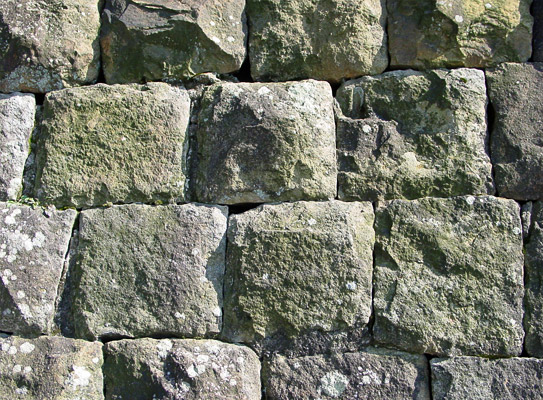|
||
 |
||

(C)2001 Japanese Architecture and Art Net Users System. No reproduction or republication without written permission.
掲載のテキスト・写真・イラストなど、全てのコンテンツの無断複製・転載を禁じます。
|
||||||
| nunozuki 布築 | ||||||
| KEY WORD : architecture / castles | ||||||
Lit. cloth
construction. Ashlar construction. Also termed nunozumi 布積 (cloth piling).
A technique used in dry stone wall *ishigaki 石垣 , construction, where rectangularly hewn stones are laid sideways
in even horizontal rows. The width of the stones varies, but their
heights are perfectly aligned. Horizontal gaps are filled with smaller
stones called tomogai-ishi 友飼石. Nunozuki is the most
common technique used to build the majority of Japanese castle walls.
The pattern created by joints between stones is called yaburemeji 破目地. Sometimes the stones are carefully squared off, horizontally
as well as vertically, giving even rows resembling a brick facade.
These tight fitting stones with even faces leave little room for attackers
to find foot and hand holds for climbing assaults. The pattern created
by joints is called yotsume meji 四目目地. This construction technique
was used mainly for the foundations of castle gates, towers *yagura 櫓, and the lower sections of the parapets. |
||||||
| REFERENCES: | ||||||
| EXTERNAL LINKS: | ||||||
| NOTES: | ||||||
(C)2001 Japanese Architecture and Art Net Users System. No reproduction or republication without written permission. 掲載のテキスト・写真・イラストなど、全てのコンテンツの無断複製・転載を禁じます。 |
||||||